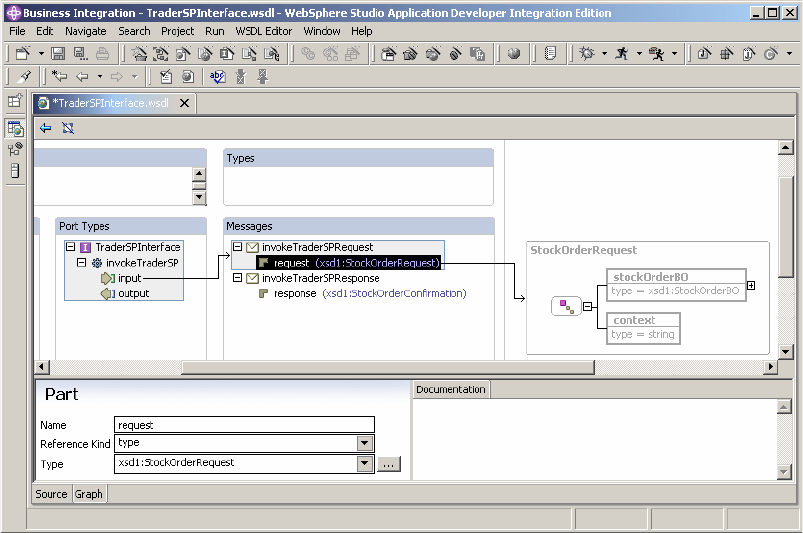Chapter 9. Integration into business processes 267
component might be called. In case a remote service has to be invoked, a JMS
binding can be used to communicate with the service.
The following sections describe how to develop the trader system process that
we designed in 6.4.1, “The stock trade scenario” on page 137.
In this system process we demonstrate the invocation of the EIS functions using
three different integration styles:
We directly invoke the EIS service using the IMS bindings that we have
created with the WebSphere Studio Application Developer Integration Edition
tools.
We invoke the EIS component that we have developed using direct EJB calls,
meaning that we call a local EIS component.
We invoke the EIS component using sender beans and Message Driven
Beans, means that we use JMS technology to call a remote EIS component.
Each of these integration styles has specific characteristics that affect the
development of the process. Calling the IMS service directly requires that data
transformations are performed in the process. Data transformation can be
implemented in the BPEL process either by using Transformation nodes or by
coding Java Snippets.
If the EIS component is invoked by JMS messages, the system process includes
a send activity to send the message. The BPEL process may also include a pick
activity to receive the confirmation message. because the process has to wait for
the message, the process has to be marked as interruptible process. This means
the process itself has to be triggered by using JMS. Introducing a pick activity
also requires the configuration of a correlation set to distinguish the trigger and
initialize messages for the process from reply messages sent by the EIS
component.
9.3.2 Developing the BPEL process
This section describes the steps to create the trader system process in detail. It
first explains how to create a service project and the basic outline of the process.
Then, it describes the creation of service bindings that are used in the BPEL
process. Finally, it demonstrates the use of the BPEL editor by successively
adding the EIS service invocations to the process.
Creating a service project and a BPEL process
When you start WebSphere Studio Application Developer Integration Edition, the
Business Integration perspective opens by default. The Business Integration


